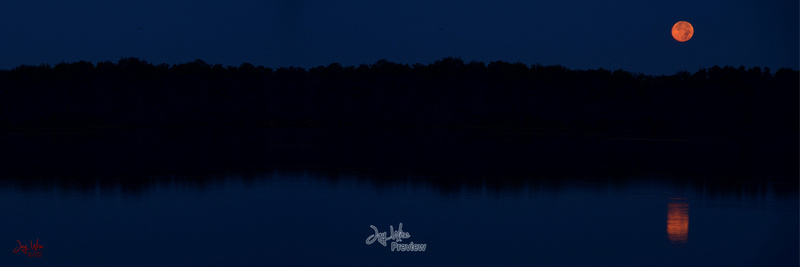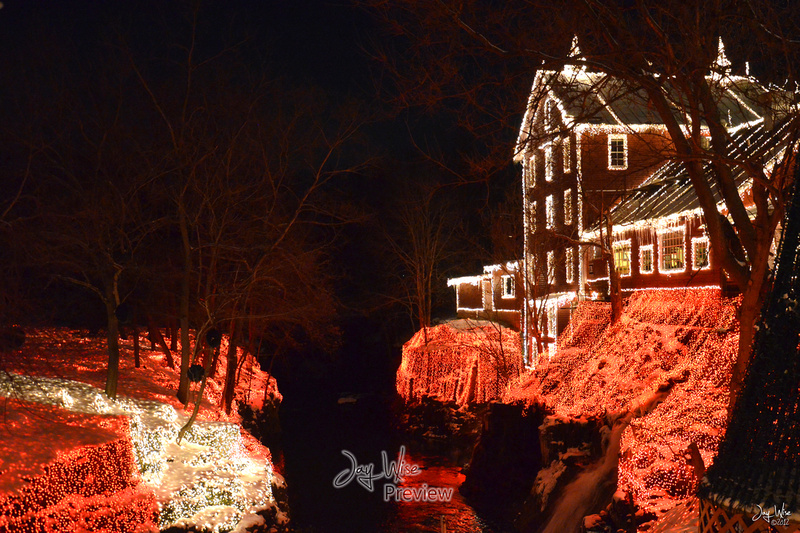
When people think of Akron, they often think Goodyear. The company with iconic blimp at sporting events calls Akron their world headquarters. But Akron's emergence goes well before that. Those who know their Akron history might next point to Quaker Oats, and the cereal empire built by Ferdinand Schumacher in the town. But you have to go well before that to know why Akron became a place to be.
In 1825 ground was broken around the state to build the first superhighway in the nation: canals. The Ohio & Erie Canal was set to connect Lake Erie at Cleveland with Portsmouth on the Ohio River, thus providing a crucial link between the Great Lakes and the Mississippi River and Gulf of Mexico. But it was the 30-some locks that led to the city at the summit of (then) Portage County that created the city known today as Akron.
 Locks, the waterway "elevators" to maintain a canal with no current where the elevation changes, were slow to navigate and those boats moving from Cleveland south would endure a slow journey through Akron. From Peninsula, Ohio, to Akron were 29 locks, many in rapid succession. Akron allowed the chance for the traveler or canawler (those working the canals) to visit a general store, grab a bit to eat or sleep overnight in a bed where no animals were close by (canal boats often had a back-up mule team on the canal boat for continual operation of the boat).
Locks, the waterway "elevators" to maintain a canal with no current where the elevation changes, were slow to navigate and those boats moving from Cleveland south would endure a slow journey through Akron. From Peninsula, Ohio, to Akron were 29 locks, many in rapid succession. Akron allowed the chance for the traveler or canawler (those working the canals) to visit a general store, grab a bit to eat or sleep overnight in a bed where no animals were close by (canal boats often had a back-up mule team on the canal boat for continual operation of the boat).
The Canal Era was short-lived, as the railroad quickly outpaced the canal boats in speed and capacity. But Ohio's canals continued to operate through 1913, when epic flooding throughout the state caused damage too significant to justify repairing and rebuilding. In Akron, pressure on the canal system with the rain and growing flood waters led to the intentional blasting of Lock 1.
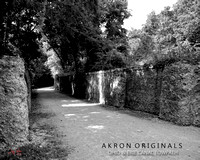
Today the canal offers many different opportunities for people of all different persuasions. North of Akron the canal towpath wanders through the Cuyahoga Valley National Park, one of the nation's most locally accessed parks. Various coalitions and civic groups have combined to offer hiking and biking for over 100 miles of the towpath through Northeast Ohio. A biker with a strong set of legs and a day to wander, can ride from downtown Cleveland south to Zoar Village in Tuscarawas County and back.
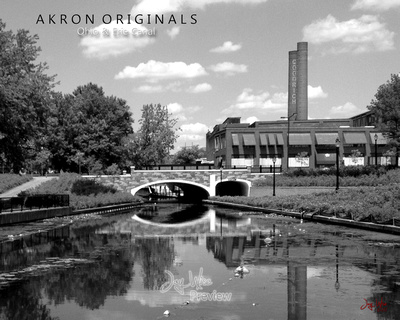 Along the way there is an operational lock at Rockside Road, south of Cleveland and the remnants of many locks through Peninsula just north of Akron. The Cuyahoga Valley Scenic Rail offers riders in the summer a chance to bike one way on the towpath and return on the train for just a few dollars. Along the stretch between Peninsula and Cleveland one can pass a Heron rookery and even an eagle's nest.
Along the way there is an operational lock at Rockside Road, south of Cleveland and the remnants of many locks through Peninsula just north of Akron. The Cuyahoga Valley Scenic Rail offers riders in the summer a chance to bike one way on the towpath and return on the train for just a few dollars. Along the stretch between Peninsula and Cleveland one can pass a Heron rookery and even an eagle's nest.
The towpath uniquely winds through downtown Akron, where Lock 3 has been turned into a recreation and entertainment complex. To the north, the canal winds under the Civic Theater (yes, under!) and restored Mustills General Store anchors the northern end of the downtown area in the Cascade Locks section. Heading south from Lock 3, the Cleveland Indians AA farm team, the Akron Aeros, play at appropriately named Canal Park, located at Lock 2. A memorial park with a metal skeleton of a canal packet boat sits atop the lock just beyond the center field wall of the stadium.
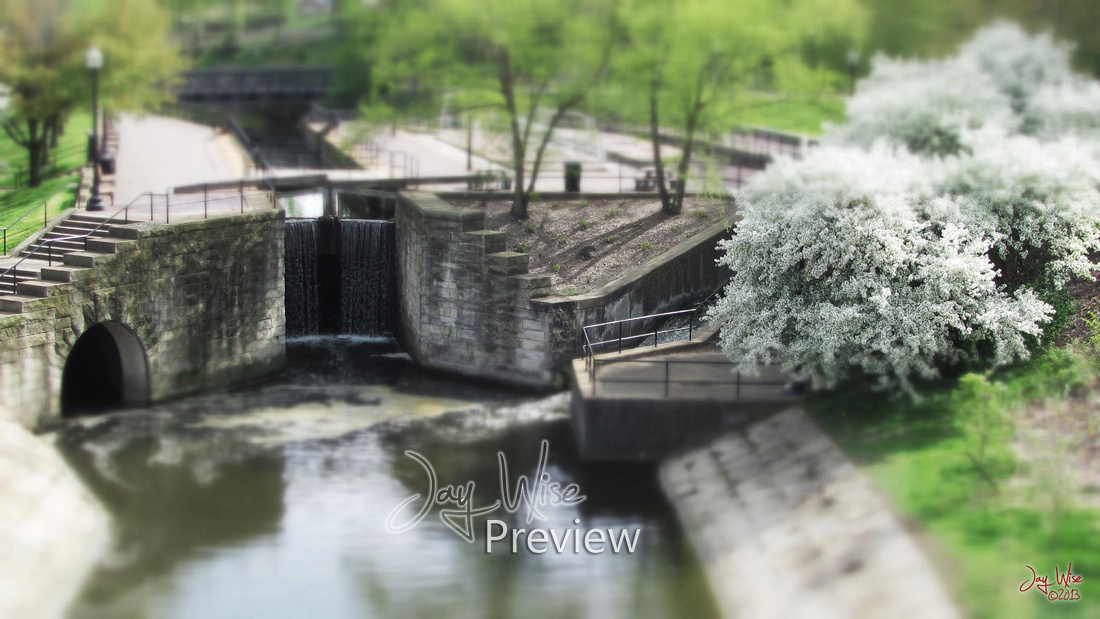
From Akron's Lock 1, the numbering goes up in either direction. Heading south to Canal Fulton, history buffs can board the St. Helena III and take a one mile ride along the canal to Lock 4. The Tuscarawas River, which feeds the canal throughout Summit and Stark counties, offers canoeing adventures that include "pedal and paddle" where you can bike one way and canoe the other.
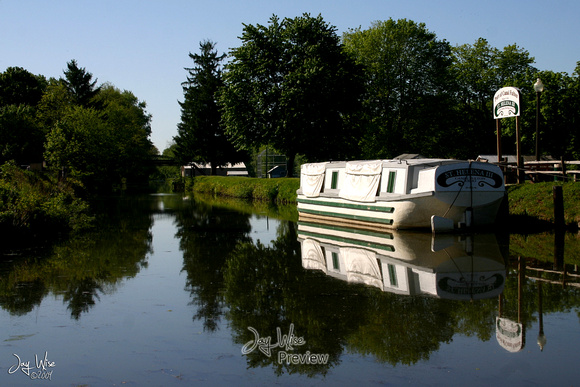 Those venturing farther south can jump off the towpath at Zoar Village and step back hundreds of years to a communal village that has been restored and offers self-guided and guided tours of many of the historic homes within the village. The hundred-plus miles of towpath today are well maintained, with crushed limestone offering good footing (and biking) for much of the trail. Continual improvements offer better conditions in many spots.
Those venturing farther south can jump off the towpath at Zoar Village and step back hundreds of years to a communal village that has been restored and offers self-guided and guided tours of many of the historic homes within the village. The hundred-plus miles of towpath today are well maintained, with crushed limestone offering good footing (and biking) for much of the trail. Continual improvements offer better conditions in many spots.
Ohio's Canal legacy runs deep, even though the canals themselves were but four feet deep and lasted less than 100 years. There's much to see and enjoy on Ohio's first economic superhighway.
- J.
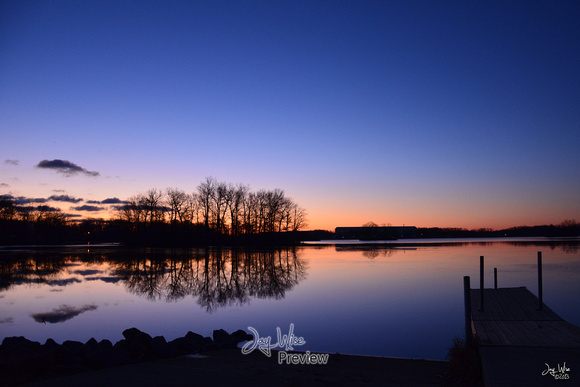 In 2009 the state of Ohio Division of Natural Resources bought Wingfoot Lake (Suffield, Ohio) from Goodyear, who had closed the park in 2006. Once a place for Goodyear employees and their families, the park is hardly a blip on the map when you think of expansive state parks. But for Goodyear employees, it was a rural respite from the grind of the city where boating, fishing, miniature golf, playgrounds, picnics and ball fields beckoned.
In 2009 the state of Ohio Division of Natural Resources bought Wingfoot Lake (Suffield, Ohio) from Goodyear, who had closed the park in 2006. Once a place for Goodyear employees and their families, the park is hardly a blip on the map when you think of expansive state parks. But for Goodyear employees, it was a rural respite from the grind of the city where boating, fishing, miniature golf, playgrounds, picnics and ball fields beckoned.
The 700+ acres, most of it water, opened up to the rest of Ohio in 2010 and immediately became a popular Akron-area destination. What makes the park unique to many visitors is the proximity to the Blimp Hangar that resides along the south shore of the lake, but not part of the State Park property.
 On any given day the blimp will fly low over the park on final approach to the hangar landing strip. Many places in the park give you great sight lines to the hangar.
On any given day the blimp will fly low over the park on final approach to the hangar landing strip. Many places in the park give you great sight lines to the hangar.
Boating is restricted to low-horsepower craft, mainly the lone fisherman and his tiny motorized skiff. Two ramps provide access from either end of the lake, one inside the park and another adjacent. It is the latter dock that offers sweeping views of the lake and tiny forested islands, where breaking dawn provides some great photography. Fishing happens all year 'round as the shallow lake freezes quite easily and ice fisherman boldly pull shanty's well off-shore.
From this westerly dock, I've put together a video of images throughout Winter 2012-13 with the hopes of moving forward with a full seasonal composite of images from the same location. As the seasons change, the same static point for shooting shots gives some very different, and at times dramatic, results.
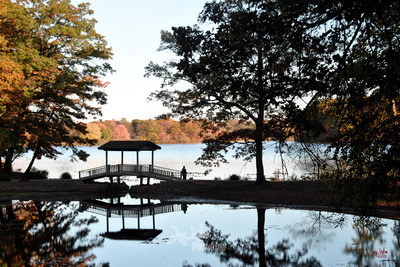 A variety of trees dot the property, from hardwood to pines. Paved paths skirt the lake and interior of the park and provide a short but scenic hike. Fall offers great views within the confines of the park as well as the distant horizon and along the lake's edges. Sans squirrels galore, the park's primary wildlife are birds, including a bald eagle that nests well to the east of the lake well away from the visiting families.
A variety of trees dot the property, from hardwood to pines. Paved paths skirt the lake and interior of the park and provide a short but scenic hike. Fall offers great views within the confines of the park as well as the distant horizon and along the lake's edges. Sans squirrels galore, the park's primary wildlife are birds, including a bald eagle that nests well to the east of the lake well away from the visiting families.
Over a million people live within a 20-minute drive of the park, or so says the Ohio Department of Natural Resources spokesperson in a news article when the park opened. It's that very ease of access that draws me into the park on a regular basis, especially with sunrises and sunsets. Both east and west directions offer natural views. And every now and then you can even take in a spectacular setting moon. It's a great place for a photography to just "Wing It" (so to speak)...
- J.
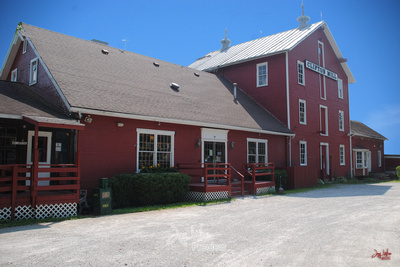 The rushing waters of the Little Miami River between Columbus and Dayton once created economic opportunity for dozens of mills in the 1880s. Today a single mill provides seasonal delight to thousands while maintaining the legacy of enterprise in Ohio. Greene County was home to over 70 mills in the early 1800s, as entrepreneurs took advantage of the river's natural energy source. Over 16 were located in the Clifton area, of which today only the Clifton Mill remains.
The rushing waters of the Little Miami River between Columbus and Dayton once created economic opportunity for dozens of mills in the 1880s. Today a single mill provides seasonal delight to thousands while maintaining the legacy of enterprise in Ohio. Greene County was home to over 70 mills in the early 1800s, as entrepreneurs took advantage of the river's natural energy source. Over 16 were located in the Clifton area, of which today only the Clifton Mill remains.
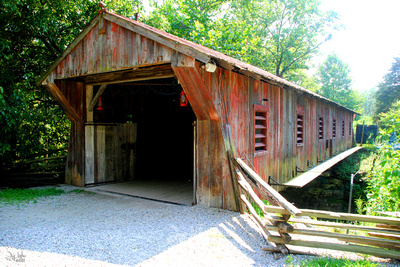
|
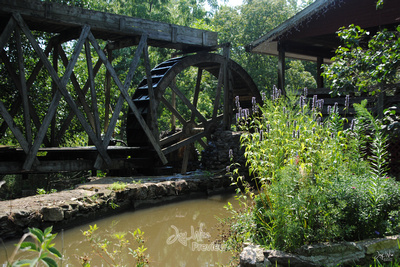 Another nearby mill, the Grinnell Mill, dates back to 1821, built on the foundation of the previous mill that burned down. It had been functioning since 1814. The mill deteriorated over time, as the Grinnell family (owned between 1864 and 1948) handed it over to nearby Antioch College, who then had no resources to restore the mill when it was declared a fire hazard in 2003. It has been lovingly restored and operates as a Bed and Breakfast with tours of the mill.
Another nearby mill, the Grinnell Mill, dates back to 1821, built on the foundation of the previous mill that burned down. It had been functioning since 1814. The mill deteriorated over time, as the Grinnell family (owned between 1864 and 1948) handed it over to nearby Antioch College, who then had no resources to restore the mill when it was declared a fire hazard in 2003. It has been lovingly restored and operates as a Bed and Breakfast with tours of the mill. illage and in 1849 an outbreak of Cholera led to half the population's demise and many others simply chose to leave town.
illage and in 1849 an outbreak of Cholera led to half the population's demise and many others simply chose to leave town. 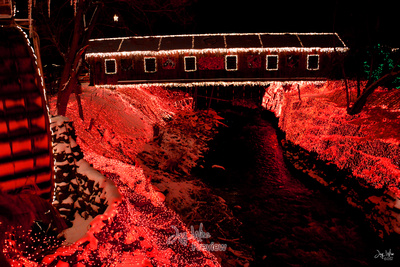 A miniature animated village and a 3,500-piece Santa collection compliment the lightscapes around the mill, which includes both a restaurant and gift shop. A crew of six take most of three months to set up the displays that are viewed by thousands. It has been an annual event for over 20 years.
A miniature animated village and a 3,500-piece Santa collection compliment the lightscapes around the mill, which includes both a restaurant and gift shop. A crew of six take most of three months to set up the displays that are viewed by thousands. It has been an annual event for over 20 years. The other 11 months find a much slower pace around the mill area. The mill claims to be the largest water-powered mill still in operation and conducts daily tours. There are other buildings in town of historic nature, some available to tour others just showpieces.
The other 11 months find a much slower pace around the mill area. The mill claims to be the largest water-powered mill still in operation and conducts daily tours. There are other buildings in town of historic nature, some available to tour others just showpieces. 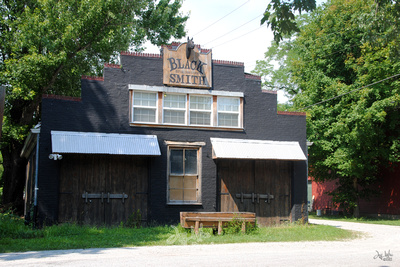 While Clifton's hey-day has long since passed, and area residents commute to jobs around the area between Dayton, Springfield and Columbus, a little piece of what was a major industry in Ohio continues to flow just as the river it utilizes for its life.
While Clifton's hey-day has long since passed, and area residents commute to jobs around the area between Dayton, Springfield and Columbus, a little piece of what was a major industry in Ohio continues to flow just as the river it utilizes for its life.
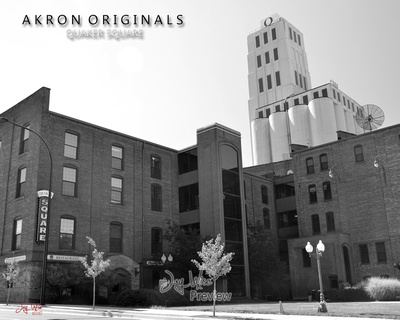 In the 1980s downtown Akron offered a neat little history-themed retail destination housed in the most unique of complexes. Quaker Square was born out of the grain silos built there in the 1930s for Quaker Oats. After abandoning production in the 1970s, the site was re-purposed into a hotel and niche shopping experience themed around oats and the railroad, which still operates just feet from the site.
In the 1980s downtown Akron offered a neat little history-themed retail destination housed in the most unique of complexes. Quaker Square was born out of the grain silos built there in the 1930s for Quaker Oats. After abandoning production in the 1970s, the site was re-purposed into a hotel and niche shopping experience themed around oats and the railroad, which still operates just feet from the site.
The 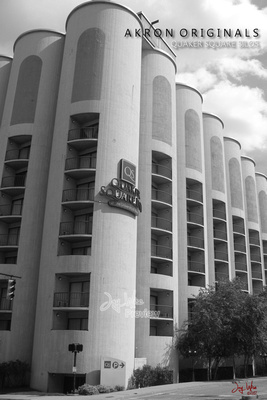 hotel featured completely round rooms built into the grain elevators. The lobby was furnished with local artist Don Drumm's works, adding a unique Akron flair to the hotel. Today the hotel is a dual purpose facility owned by the University of Akron, which the upper floors being student housing and the lower floors still serving as a hotel to the downtown and campus area.
hotel featured completely round rooms built into the grain elevators. The lobby was furnished with local artist Don Drumm's works, adding a unique Akron flair to the hotel. Today the hotel is a dual purpose facility owned by the University of Akron, which the upper floors being student housing and the lower floors still serving as a hotel to the downtown and campus area.
But for locals who weren't staying over night in the hotel, Quaker Square was about the quaint step into history nestled into a series of nooks and crannies around the grounds. The 1980s was a time throughout America for themed-destination retail shopping ideas. Quaker Square had several levels of shopping and eating that while tiny in comparison to many of the destination malls throughout the region, offered a unique experience unmatched by the big boys.
As with much of the niche-retail marketing in the 1990s, Quaker Square quickly dropped off in traffic and by the 2000's was in dying a slow death. The University of Akron stepped in and purchased the facilities and today with the hotel still being operational and several tenants occupying the office complex section of the site, Quaker Square continues to survive. 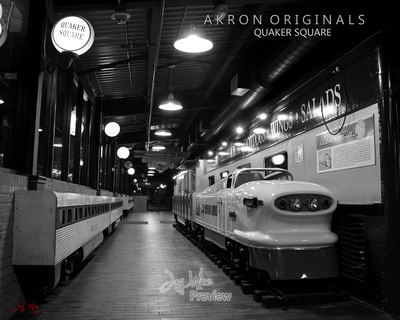
Today the main retail floor offers a bakery, a bagel and quick-mart combination, a book store replete with historical offerings and a museum-like store-front that has train displays and other historic offerings. Wandering towards the hotel is another larger restaurant themed off the railroad, complete with a refurbished miniature train that pulled kids around a short track in places like malls and museums.
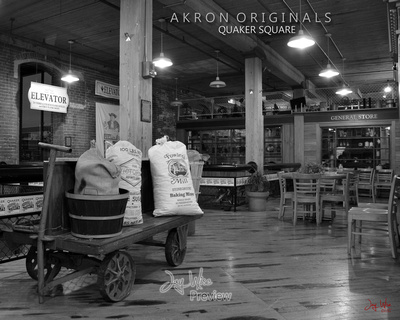 While the heyday of Quaker Square was over 25 years ago, the flair and flavor of the facility still reaches out to you. And with a little growth here and a little growth there, it is possible that Quaker Square could become a bustling retail stop in the downtown area yet again. Within a few minutes walk are the most visited part of downtown Akron, including the convention center, library and art museum.
While the heyday of Quaker Square was over 25 years ago, the flair and flavor of the facility still reaches out to you. And with a little growth here and a little growth there, it is possible that Quaker Square could become a bustling retail stop in the downtown area yet again. Within a few minutes walk are the most visited part of downtown Akron, including the convention center, library and art museum.
- J.
The images on this page are available in the Akron Originals gallery or by clicking each individually. They are available for purchase as prints or downloaded images.
